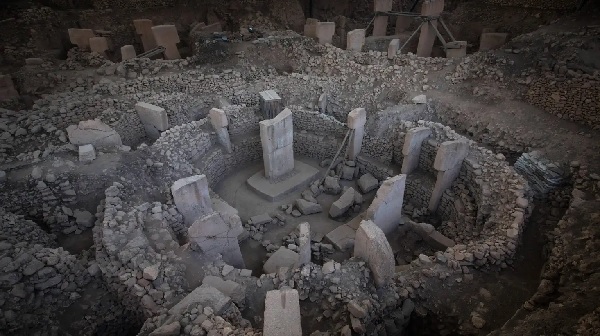The 11,500-year-old archaeological site was unharmed in the disaster, which killed over 35,000 people and destroyed thousands of buildings.
The magnitude 7.8 earthquake that devastated south-central Turkey and northern Syria did not damage the ancient site of Göbekli Tepe, according to researchers there.
The quake struck a week ago, with an epicenter just west of Gaziantep, Turkey; it could be felt as far away as Cyprus and Lebanon. The death toll is currently over 35,000, and more than a million people in Turkey alone have been displaced, The New York Times reported Monday.

The disaster caused substantial damage to recent construction in Turkey, which caused the pancake collapse of newer buildings. But it also partially destroyed older structures like Gaziantep Castle, a 2,000-year-old fortress about 80 miles south of the initial quake’s epicenter.
The damage to older sites caused many to worry about other archaeological and cultural heritage sites in Turkey and Syria, which span thousands of years of human history. Cities like Aleppo and Antakya (which sit on top of the remains of Antioch) have been centers of human civilization for millennia and still have active archaeological excavations underway there.
Perhaps the most significant of those sites is Göbekli Tepe, a neolithic site of megalithic structures in Turkey’s Germuş mountains. Göbekli Tepe is the oldest known megalithic site built by Homo sapiens, making it a fundamental piece of the human story. Also referred to as the oldest religious site or oldest temple, it’s generally thought that Göbekli Tepe had ceremonial purposes, rather than being a settlement.
 Apparent bird figures carved into a stone at Göbekli Tepe.Photo: Chris McGrath (Getty Images)
Apparent bird figures carved into a stone at Göbekli Tepe.Photo: Chris McGrath (Getty Images)
In a statement, the Göbekli Tepe Research Project team confirmed the news initially reported by Turkey’s General Directorate of Cultural Assets and Museums: that the 11,500-year-old structure in southeastern Anatolia was not damaged by the recent quake.
The site is about 86 miles east of Gaziantep, putting it well within the boundaries of the quake’s tremors. Though it is unscathed, other ancient sites weren’t as lucky. Besides Gaziantep Castle, the ancient citadel of Aleppo—recently damaged in Syria’s civil war—was affected. According to Reuters, the Syrian antiquities directorate reported that parts of an Ottoman-era mill had collapsed and parts of the minaret on the citadel’s mosque had fallen.
The release from the Turkish general directorate stated that no serious damage from the quake was observed in regional museums and the museums’ collections were safe—quelling fears about looting as well as earthquake damage. However, mudbrick walls in the Arslantepe Mound, a UNESCO World Heritage Site, had slipped due to the quake. Slight slips were also reported in Diyarbakır’s ancient city walls, which were built by the Romans, and in the entrance to St. George’s Church in Diyarbakır.
Information about the earthquake’s effects on cultural heritage sites is still trickling out—saving lives obviously comes before assessing the state of these structures—but at least one, Göbekli Tepe, is thankfully intact.








